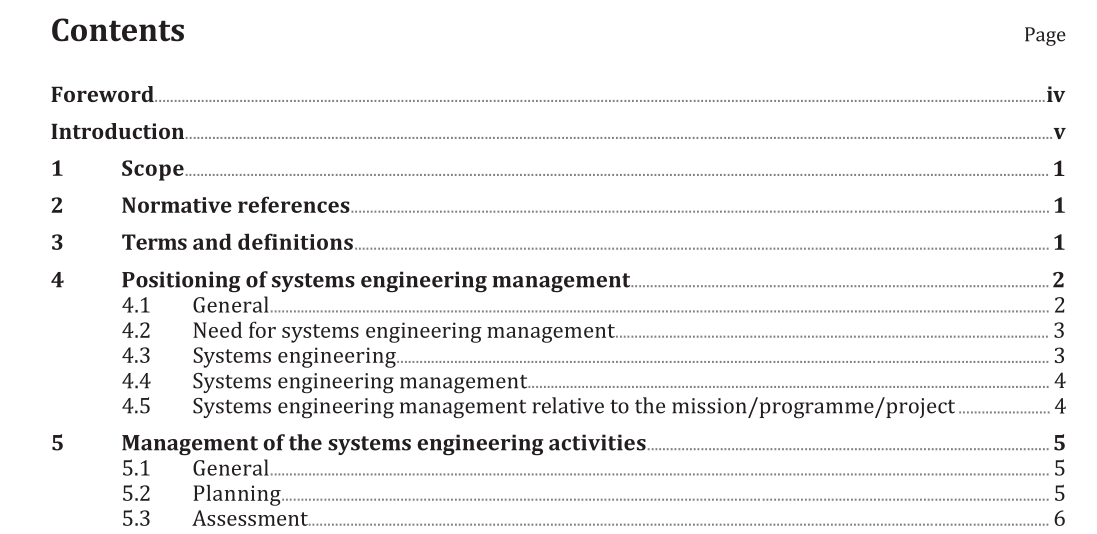BS ISO 18676:2017 pdf download.Space systems — Guidelines for the management of systems engineering
1 Scope
This document presents the guidelines for the management of systems engineering for space systems. This document addresses the systems engineering activities and provides guidelines for interfacing with specific major management subjects (e.g. configuration management, data management, interface management, risk management, requirements management, and integrated logistics support), which are themselves the subject of this document. This document establishes a common reference for all customers and suppliers in the space sector to work with management systems engineering for all space products and projects.
These guidelines emphasize the following aspects of managing space systems engineering:
— the positioning of space systems engineering activities related to the management of space activities;
— the framework for the management of systems engineering;
— the systems engineering management plan (SEMP);
— the system, product and work breakdown structures;
— the phasing, scheduling and recursivity of the systems engineering management;
— reviews, audits and control gates;
— the main activities of systems engineering and the respective management approach.
It is not the scope of this document to describe in detail the standard systems engineering process or project management process for all types of space systems.
2 Normative references
There are no normative references in this document.
3 Terms and definitions
For the purposes of this document, the following terms and definitions apply.
ISO and IEC maintain terminological databases for use in standardization at the following addresses:
— IEC Electropedia: available at http://www.electropedia.org/
— ISO Online browsing platform: available at http://www.iso.org/obp
3.1 management
coordinated activities to direct and control an organization (3.2)
[SOURCE: ISO 9000:2015, 3.3.3]
4.3 Systems engineering
Systems engineering provides the identification and understanding of a need and derives, develops and verifies a solution that will be balanced during the space system life cycle in order to meet that need. Systems engineering balances the satisfaction of all stakeholders involved in the solution life. Figure 1 presents the V-Model and its set of systems engineering processes in the classical life cycle stages. The term systems engineering process describes the activities used to transform requirements in an effective product. These activities enable systems engineers to coordinate the interaction between engineers, other specialists, stakeholders, operators, and manufacturing. The classical space systems life cycle is divided into stages, and each stage contains systems engineering processes. The concept stage includes the concept of the operations process; the development stage includes the requirements and architecture analysis processes, and detailed design process; the production stage includes the synthesis process, assembly, integration and verification process, and system validation process; and the utilization stage includes the operations and maintenance processes.
BS ISO 18676:2017 pdf download
